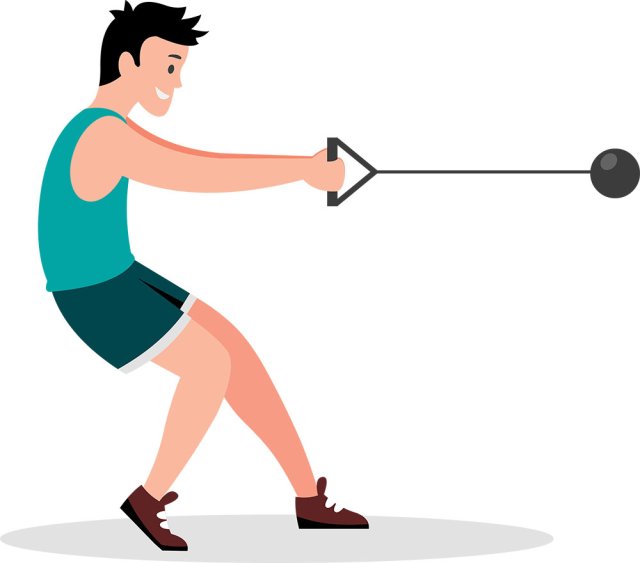Track and Field: History, Events, Famous Athletes, and Fun Facts for Students
Learn about track and field’s exciting history, events, and world records. Discover famous athletes and why this sport is so inspiring.

🏃 Track and Field: The Ultimate Test of Speed, Strength, and Endurance
🎯 Introduction
Track and field is a collection of athletic events that test running, jumping, and throwing skills. Athletes compete in sprints, hurdles, distance races, long jumps, pole vault, shot put, and more. Track and field is the heart of the Olympics and has produced some of the world’s most famous athletes. This article will teach you how it all began, what events are included, and why it inspires millions.
🏛️ History of Track and Field
Ancient Times
-
The first known races were held in ancient Greece over 2,500 years ago.
-
The Olympic Games (776 BCE) included footraces and the pentathlon.
Modern Development
-
Track and field became organized in England in the 1800s.
-
The first modern Olympics in 1896 featured 12 athletics events.
-
Today, it includes over 40 disciplines.
🏃 How Track and Field Is Practiced
The Track
-
Oval track 400 meters around.
-
Divided into lanes.
The Field
-
Infield for jumping and throwing.
Types of Events
-
Track Events:
-
Sprints: 100m, 200m, 400m.
-
Middle distance: 800m, 1500m.
-
Long distance: 5000m, 10,000m.
-
Hurdles: 100m/110m, 400m.
-
Relays: 4x100m, 4x400m.
-
-
Field Events:
-
Jumps: Long jump, high jump, pole vault, triple jump.
-
Throws: Shot put, discus, hammer, javelin.
-
-
Combined Events:
-
Decathlon (men) and heptathlon (women).
-
🧬 Classification and Scientific Background
Classification:
-
Individual Sport (relays are team events).
-
Endurance and Strength Sport.
Biomechanics:
-
Power: For jumps and sprints.
-
Speed: Fast acceleration.
-
Technique: For hurdles and throws.
-
Endurance: Long-distance races.
Exercise Science:
-
Builds cardiovascular fitness.
-
Strengthens muscles.
-
Improves agility and coordination.
Psychology:
-
Teaches goal setting.
-
Builds resilience.
-
Encourages focus.
🧢 Major Competitions
-
Olympic Games
-
World Athletics Championships
-
Diamond League
⭐ Famous Athletes
-
Usain Bolt (Jamaica): World’s fastest man.
-
Carl Lewis (USA): 9 Olympic gold medals.
-
Allyson Felix (USA): Most decorated female sprinter.
-
Sergey Bubka (Ukraine): Pole vault legend.
-
Haile Gebrselassie (Ethiopia): Long-distance champion.
💪 Benefits of Track and Field
-
Builds strength and speed.
-
Improves endurance.
-
Teaches discipline.
-
Encourages teamwork in relays.
🏅 Famous Moments
-
Usain Bolt’s 9.58-second 100m world record.
-
Jesse Owens winning 4 golds in 1936.
-
Florence Griffith-Joyner’s 1988 records.
🌟 Interesting Facts
-
The decathlon combines 10 events.
-
The pole vault bar is over 6 meters high.
-
The javelin can be thrown over 90 meters.
🧠 Kid-Friendly Summary
Track and field includes running, jumping, and throwing events. Athletes train hard to be fast and strong. The sport began in ancient Greece and is part of the Olympics. It helps you build fitness and confidence.
✨ Key Takeaways
-
Track and field is over 2,500 years old.
-
Includes sprints, jumps, throws, and relays.
-
Usain Bolt holds the fastest 100m record.
-
The decathlon has 10 different events.
📖 Vocabulary Words
| Word | Definition |
|---|---|
| Relay | Team race with a baton |
| Sprint | Short fast race |
| Hurdle | Barrier to jump over |
| Decathlon | Ten events combined |
| Heptathlon | Seven events combined |
| Javelin | Spear thrown for distance |
| Foul | Invalid attempt |
| Photo Finish | Finish determined by camera |





















































